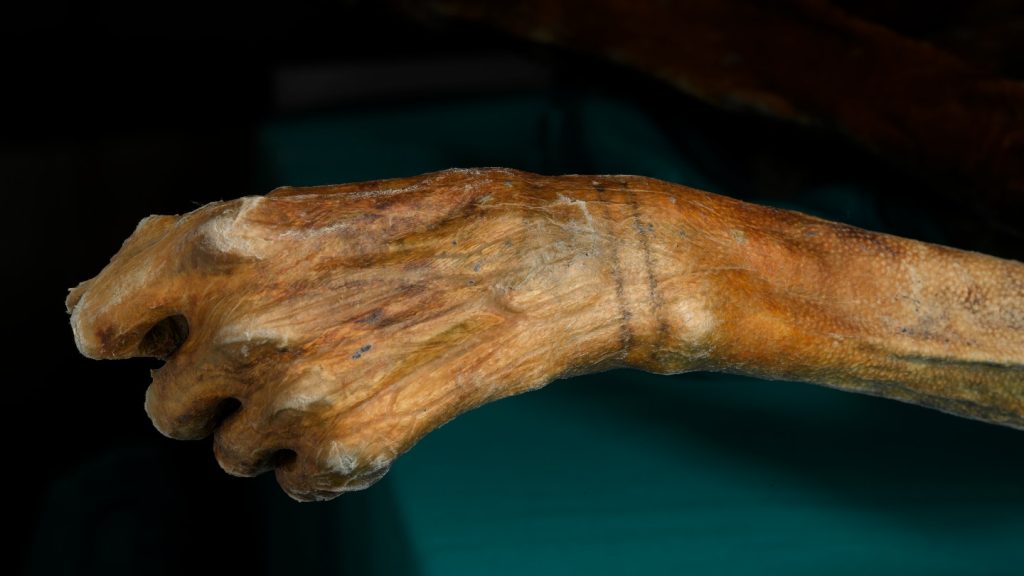A new study challenges the conventional wisdom about how the famous Iceman, Ötzi, got his tattoos. Ötzi, whose body was found mummified in the Italian Alps, had 61 tattoos, leading to an assumption that charcoal ash was rubbed into skin incisions to create the tattoos. However, researchers now suggest that a hand-held, single-pointed tool with pigment on its tip was likely used to punch closely spaced holes in Ötzi’s skin, marking a departure from the previous hypothesis. This technique, known as hand-poke tattooing, has been commonly used in nonindustrialized cultures around the world.
Researchers conducted experiments with professional tattooists to replicate traditional tattooing techniques using tools made from animal bone, obsidian, copper, boar tusk, and steel, similar to those available in Ötzi’s time. Different techniques, such as hand poking, bone comb tapping, skin slicing with an obsidian blade, and thread pulling, were employed to understand how Ötzi’s tattoos may have been created. Microscopic comparisons of the tattoos produced through these different methods revealed distinctive physical signatures that were then compared to images of Ötzi’s tattoos.
The tattoos on Ötzi’s body, characterized by their width, rounded ends, stippling, and pigment seepage suggest that hand poking with a bone point or copper awl was likely used to create them. Although the study does not provide concrete evidence on how Ötzi got his tattoos, it offers compelling arguments in favor of hand-poke tattooing. Researchers recommend further examination of artifacts found in Ötzi’s possession, such as a bone awl and an antler tip, to determine if they were used in tattooing.
The use of traditional tattooing techniques in the study sheds light on ancient tattoo practices and challenges the existing hypothesis about Ötzi’s tattoos. By collaborating with professional tattooists and experimenting with different tools and techniques, researchers were able to gain insights into how tattoos were created in ancient times. The detailed microscopic analysis of tattoos and comparison to Ötzi’s body markings highlight the similarities between hand-poke tattooing and the Iceman’s tattoos, providing a new perspective on the practice.
This study enhances our understanding of ancient tattooing practices and challenges long-held assumptions about Ötzi’s tattoos. The use of modern tattooing techniques and tools to replicate ancient practices offers a unique perspective on how tattoos were created in the past. By providing evidence for hand-poke tattooing as the likely method used on Ötzi, this research opens up new avenues for exploring ancient tattoo practices and techniques. Further investigation of artifacts in Ötzi’s possession could provide additional insights into his tattoos and the tools used to create them.


